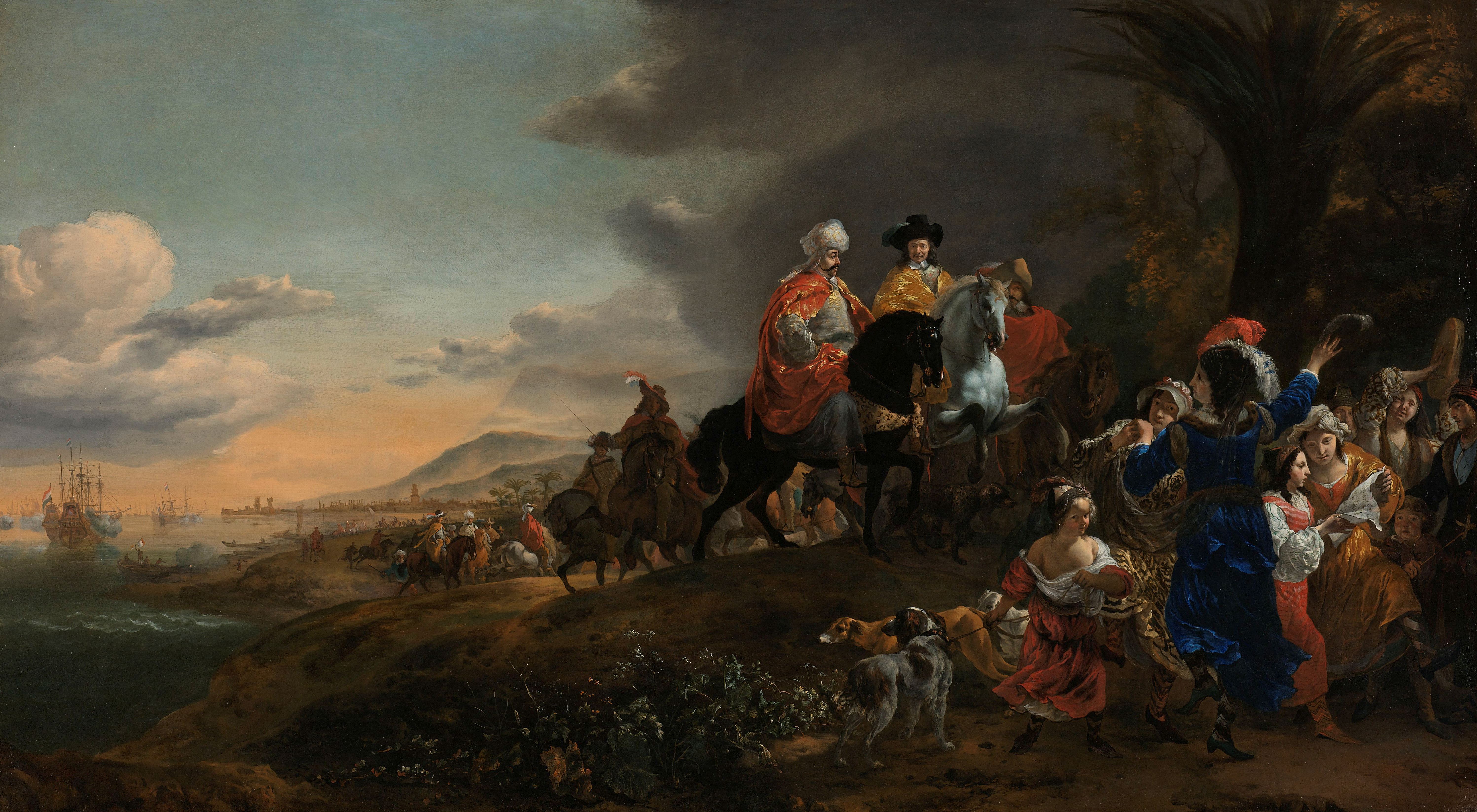The Dutch Ambassador on his Way to Isfahan

Annotation
This painting by Jan Baptist Weenix depicts the Dutch ambassador Joan Cunaeus and his secretary, Cornelis Speelman, on a diplomatic mission to Isfahan in Persia in 1651-52. The men were sent to Isfahan on behalf of the Dutch East India Company (VOC) to stimulate trade in horses and silk. Cunaeus, prominently depicted on a white horse, is wearing a silk cloak, a gift from the Shah of Persia. Cunaeus’s golden cloak and white horse emphasize his importance. To the left of the ambassador is a well-dressed Persian man, most likely the Sultan of Bandar Abbas, who is acting as escort for the Dutch contingent. The opulence of the men’s dress and the painting’s idyllic setting shows an unrealistic imagining of European diplomacy in early-modern Asia. The ambassador is pictured in front of a large column of horsemen with a massed array of VOC ships anchored offshore. This overwhelming show of strength and prestige most likely never occurred. In fact, most ambassadors found themselves marooned in distant capitals with little power and even less influence.
Credits
Jan Baptist Weenix, The Dutch Ambassador on his Way to Isfahan, 1653-1659. SK-A-3879, Rijksmuseum, Amsterdam
Annotated by Adam Clulow and Raymond Hyser